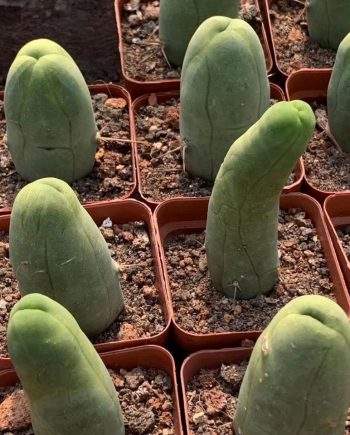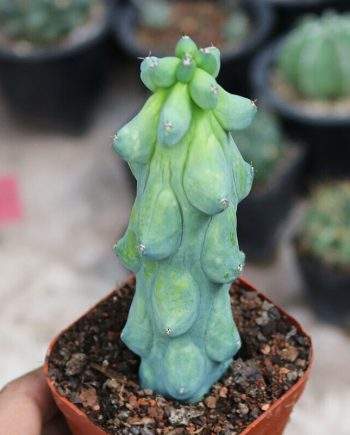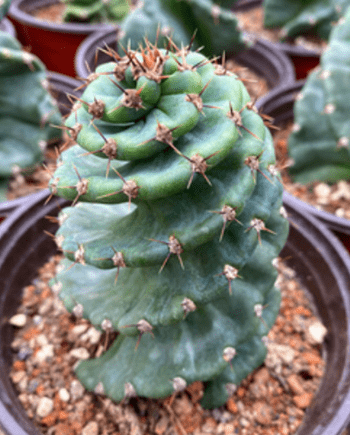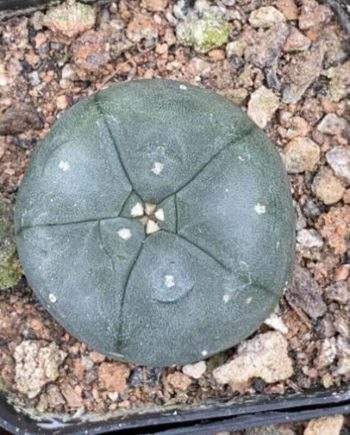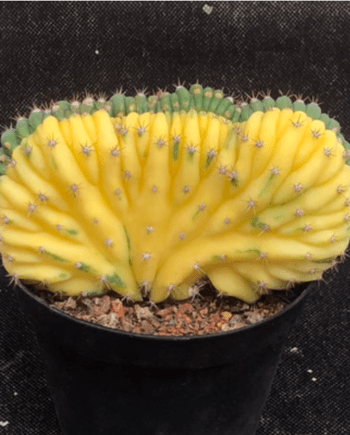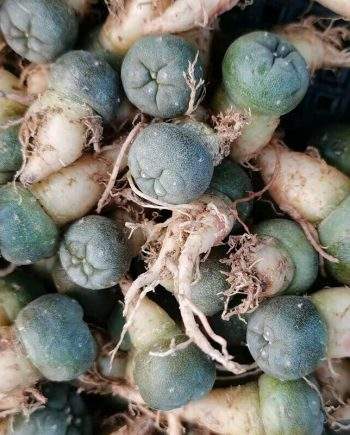In the 1990s, the cactus species Trichocereus bridgesii underwent a taxonomic reclassification, and it was renamed Echinopsis lageniformis. This change was part of ongoing efforts to better understand the genetic relationships among cactus species.
Reports suggest that Trichocereus bridgesii’s potency surpasses what its measured mescaline content would imply. It possesses the ability to induce a mind-expanding and kaleidoscopic psychedelic journey, often characterized as having a clearer mental state compared to the Peruvian torch. In Bolivia, this cactus serves a dual role, not only for its practical hedge plant utility but also for its ornamental value. Trichocereus bridgesii distinguishes itself by its slightly slimmer profile compared to other trichocereus cacti and its ease of cultivation, making it an excellent choice, particularly well-suited for novice growers.
Natural Habitat
Trichocereus bridgesii is native to the high-altitude regions of Bolivia and parts of Argentina, primarily in the Andes mountains.
Historical Mention
The species was first documented in botanical literature by British botanist and explorer Richard Spruce during his travels in South America in the mid-19th century. The specific year of its mention is typically noted around the 1850s, though the exact date can vary depending on sources. Richard Spruce’s work significantly contributed to the scientific understanding of South American flora and introduced many cactus species to the scientific community.
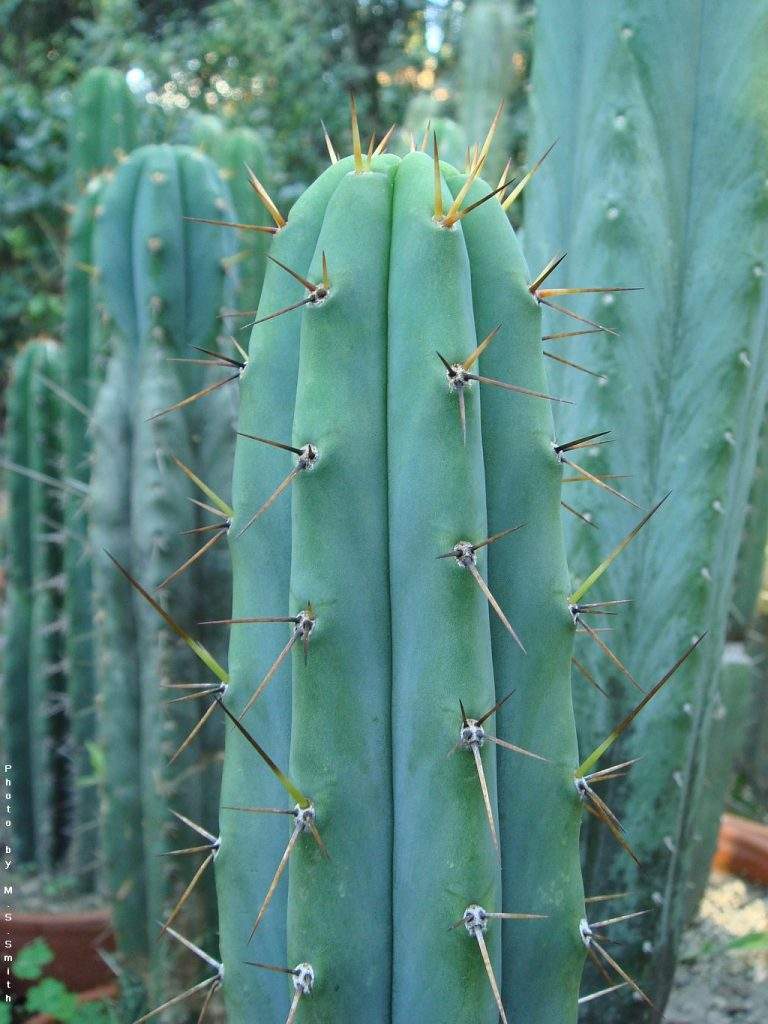
Richard Spruce’s Expeditions
In 1849, at the age of 31, Richard Spruce embarked on a 15-year botanical expedition to South America with a primary focus on studying plant life in the Amazon Rainforest and the Andes Mountains. During his explorations, he collected a wide range of plant specimens, including various orchids, bromeliads, and cacti like Trichocereus bridgesii (now Echinopsis lageniformis). His work also led to the discovery of new plant species and invaluable insights into the indigenous uses of plants, which he documented in scientific journals and books.
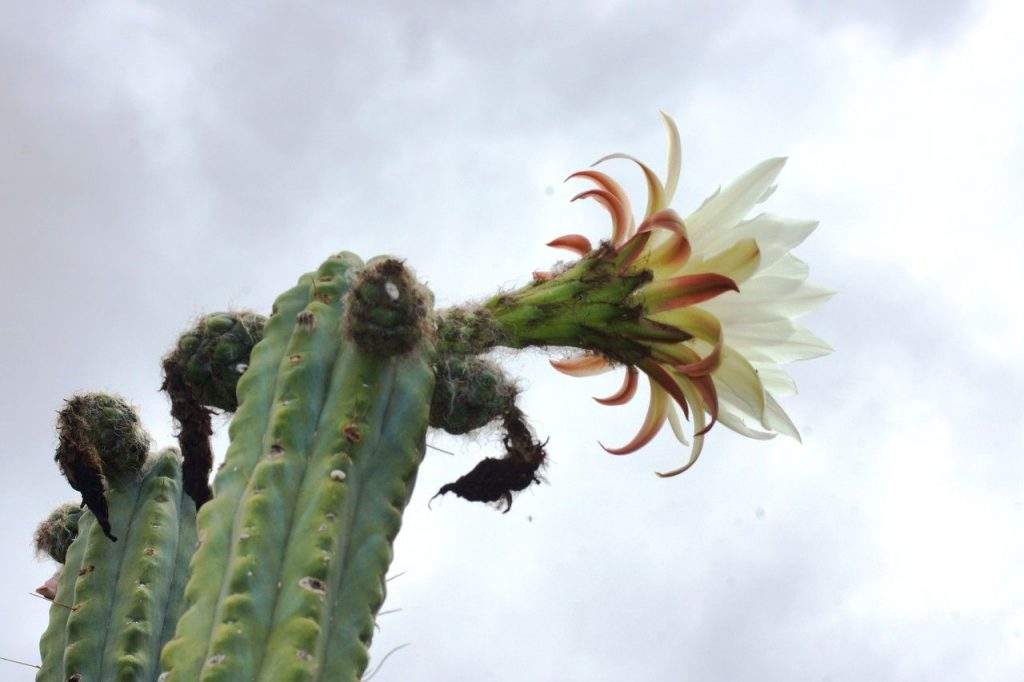
Some of the popular clones include:
- Trichocereus bridgesii, ‘SS02’:
- A tall cactus, known for its distinctive features. It exhibits a dense candelabra-like growth pattern, reaching impressive heights of up to 16 feet. The stems of this cactus have a striking blue-gray or green-frosted appearance and can reach a diameter of up to 5 inches. They are characterized by 5 to 7 well-defined ribs. Notably, each areole on the cactus bears 2 to 4 central spines that can grow up to 1.5 inches in length. One interesting feature is that when new growth occurs on older stems, they often lack spines for short sections.
Origin: - The ‘SS02’ cactus has an intriguing history. It originally came from Serra Gardens. This cactus was part of a substantial stand of cacti at the Serra Gardens location. Cuttings of ‘SS02’ were acquired by Ben Kamm of Sacred Succulents in the late 1990s. It is believed that Serra Gardens inherited the cactus from Ed and Betty Gay’s collection. Ed and Betty Gay were renowned for their extensive travels throughout Central and South America from the 1950s through the 1970s. ‘SS02’ likely originated from their collection. Additionally, this cactus exhibits a distinctive form similar to those observed in the La Paz basin.
‘Psycho0’ Cactus
- Origin: The ‘Psycho0’ cactus was introduced in honor of a respected Trichocereus breeder in Australia who passed away at a young age. The original clone came from Cactus Country, a renowned cactus garden in Strathmerton, Australia.
- Characteristics: ‘Psycho0’ is a type of Trichocereus bridgesii known for its distinctive features. It has lengthy and robust yellow spines, typically three exceptionally sturdy ones, giving it a unique appearance. Occasionally, it may resemble a more standard Trichocereus bridgesii.
- Popularity: This variety is highly regarded and in high demand, primarily due to its exceptional aesthetics and the belief that it contains elevated levels of various alkaloids.
“Eileen” Cactus
- Origin: “Eileen” hails from Colac, Victoria, Australia. This cactus is known for its relative resistance to rot.
- Grower: “Eileen” was cultivated and shared by the late Ed Stroud, also known as “reshroomED,” who was a member of the “SAB” forum. The original plant was found in Ed Stroud’s mother’s yard, and he named it after her, Eileen. This cactus is highly cherished for its rapid growth and attractive appearance, characterized by short golden spines.
- Flowering: It’s worth noting that “Eileen” cacti rarely produce flowers.
For more details and discussions about “Eileen,” you can visit the forum post on reshroomED’s “SAB” forum: Eileen Forum Post
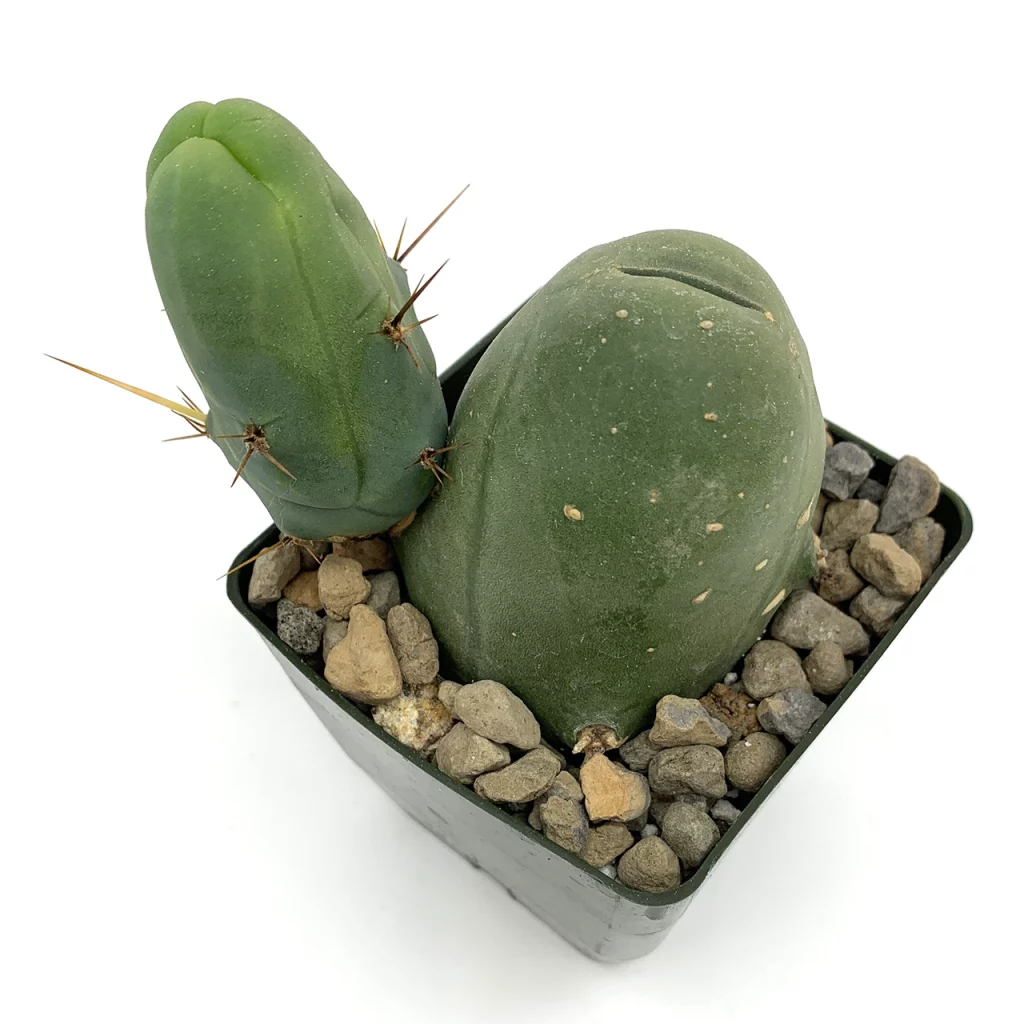
Monstrose Form of Trichocereus bridgesii (‘Monstrose’)
The monstrose form of Trichocereus bridgesii, often known as the “penis cactus,” is distinctive due to its irregular and distorted growth. It frequently appears as lumpy, knobby, or otherwise abnormal cacti. ‘Monstrose’ cacti are fascinating for their unique growth pattern. Likely introduced to cultivation by Ed and Betty Gay in the ’60s.Here’s more information:
- Description: ‘Monstrose’ is a rare and uncommon variant of Trichocereus bridgesii, also known as the Bolivian Torch Cactus. It is recognized for its abnormal or mutant growth, resulting in cacti that have irregular, distorted, and misshapen appearances, often resembling lumpy or knobby shapes.
- Clones: While there are no officially recognized ‘Monstrose Clone A’ or ‘Monstrose Clone B’ by botanical authorities, these designations are informally used by cactus enthusiasts to differentiate various monstrose variations.
- Monstrose Clone A (Long Form): These cacti display unusual, sometimes grotesque growth patterns with irregular, contorted stems, often forming convoluted, bumpy, and knobby shapes.
- Monstrose Clone B (Short Form): Similar to Monstrose Clone A, these cacti exhibit mutant growth characteristics, but their stems are shorter.
- Popularity: Monstrose forms of cacti are sought after by collectors and enthusiasts due to their intriguing and unique appearances. They are typically cultivated for their ornamental value and the curiosity surrounding their bizarre growth patterns. However, they are less common in cultivation compared to the typical columnar or cylindrical cacti.
- Care: It’s important to note that while monstrose cacti are grown for their aesthetics, they still require similar care to their normal counterparts. Proper care includes well-draining soil, sufficient sunlight, and appropriate watering practices.
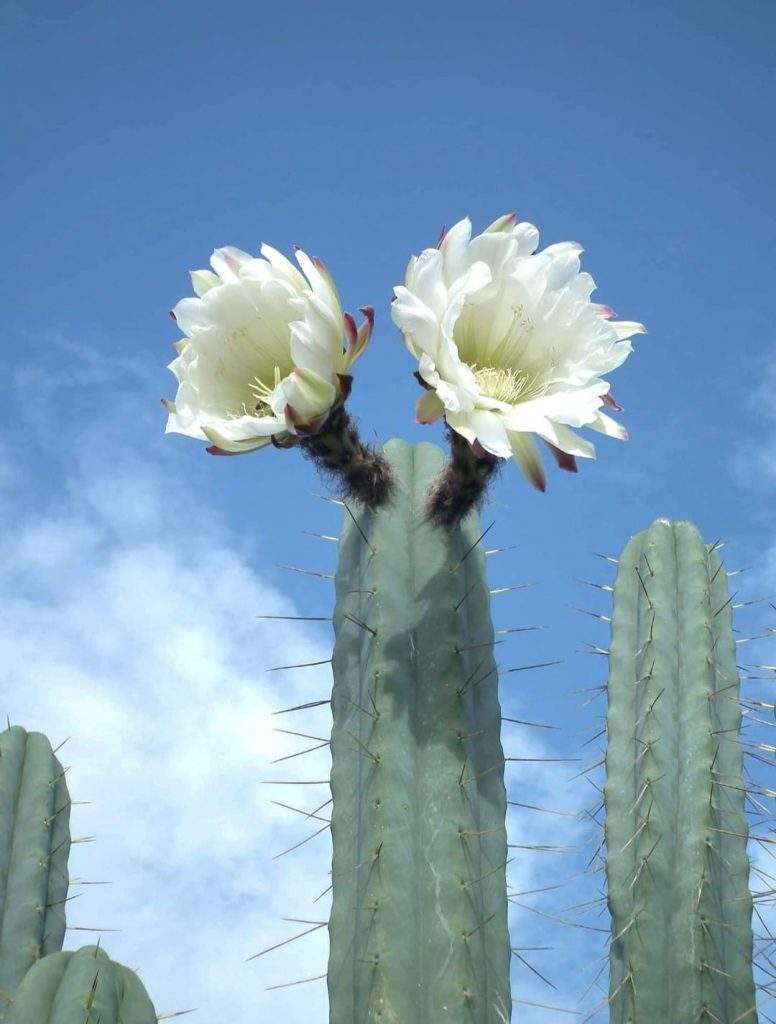
Some Products
-
Penis Cactus – TBM Clone B$37.00
-
Myrtillocactus Geometrizans cv. Fukurokuryuzinboku$38.00
-
Product on saleCereus forbesii cv. SpiralisOriginal price was: $45.00.$42.00Current price is: $42.00.
-
Lophophora williamsii 2cm-4cm$36.00 – $156.00
-
Trichocereus Pachanoi Monstrose Cristata Variegata (TPMCV)$62.00
-
Lophophora Williamsii (Peyote) 1cm-2cm 5pcs$53.00

